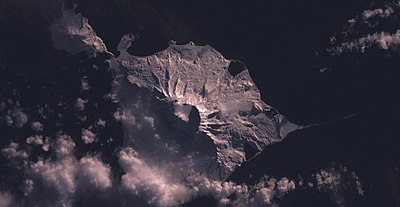| Revision as of 19:45, 25 May 2005 editSteinsky (talk | contribs)Extended confirmed users23,754 editsm title already disambiguated← Previous edit | Revision as of 01:50, 28 May 2005 edit undoEveryking (talk | contribs)155,603 editsm →Extenal linksNext edit → | ||
| Line 4: | Line 4: | ||
| A smaller volcanic headland, the ], extends approximately 10 km to the northwest, created by a separate volcano, ]; its highest point is ], at 715 m. | A smaller volcanic headland, the ], extends approximately 10 km to the northwest, created by a separate volcano, ]; its highest point is ], at 715 m. | ||
| == |
==External links== | ||
| * | * | ||
Revision as of 01:50, 28 May 2005

Big Ben is a volcanic massif that dominates the geography of Heard Island. It is a composite cone with a diameter of approximately 25 kilometres. Its highest peak is Mawson Peak, the only active volcano in Australian territory which is 2,745 m above sea level. Much of it is covered by ice, including 12 major glaciers which descend from Big Ben to the sea.
A smaller volcanic headland, the Laurens Peninsula, extends approximately 10 km to the northwest, created by a separate volcano, Mount Dixon; its highest point is Anzac Peak, at 715 m.
External links
This Antarctica or antarctic or sub-antarctic islands location article is a stub. You can help Misplaced Pages by expanding it. |